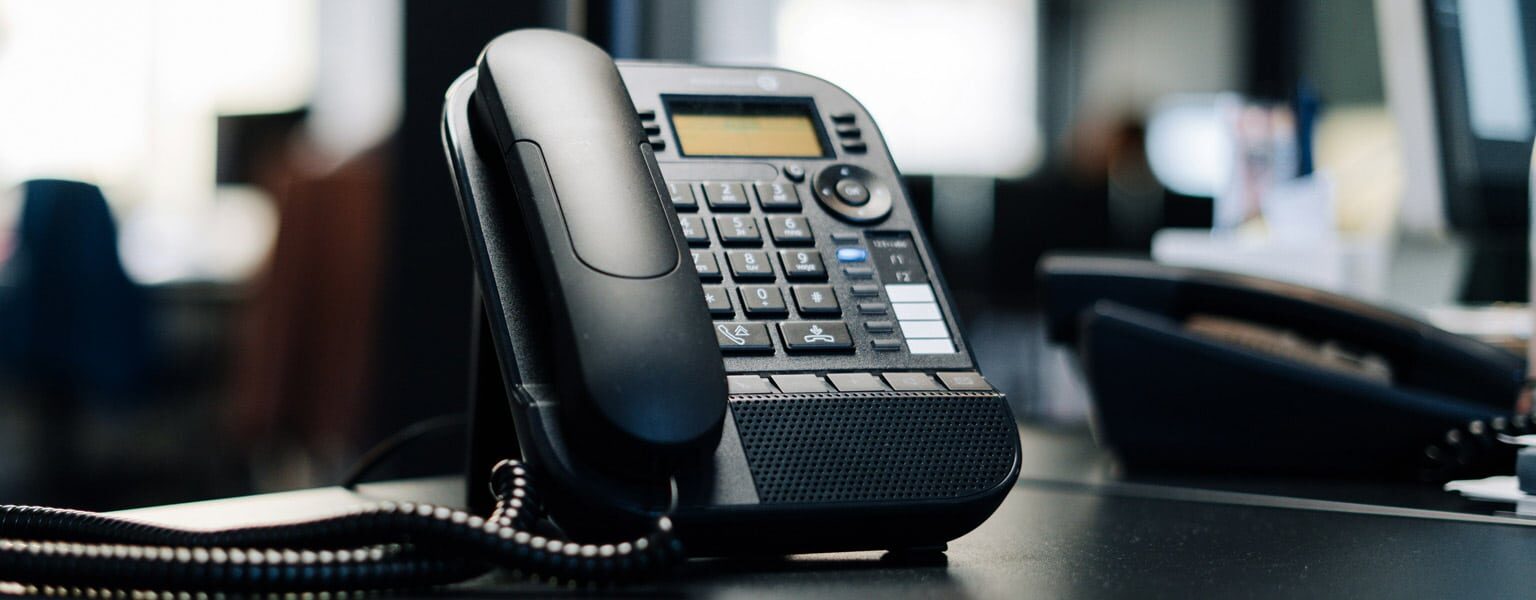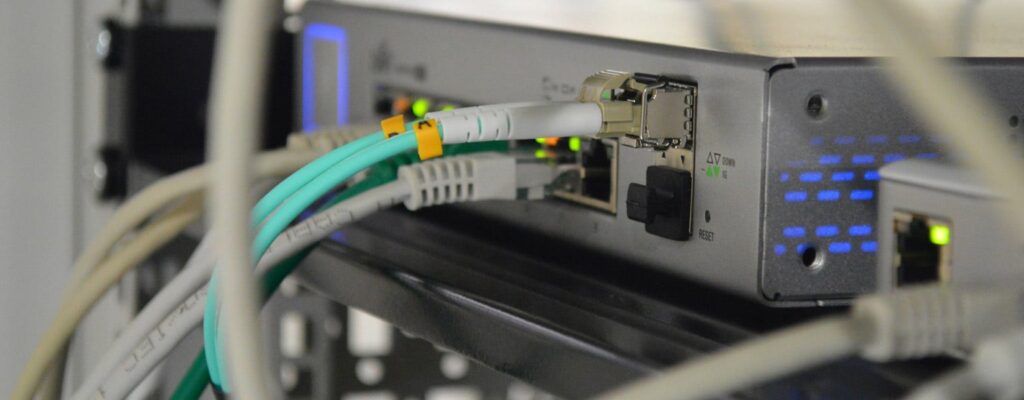Top VoIP Security Risks for SMBs (and How to Prevent Them)
Contents
Key Takeaways
Learn the most common security risks that threaten business VoIP systems.
Discover proven ways to secure your VoIP network and protect sensitive conversations.
Understand how VoIP fits into your broader cybersecurity and compliance strategy.
Get practical, SMB-friendly prevention steps that don’t require a massive IT overhaul.
Voice over Internet Protocol (VoIP) has transformed business communications — replacing clunky desk phones with flexible, cloud-powered systems. But while VoIP offers lower costs, mobility, and scalability, it also opens new doors for cybercriminals.
For small and mid-sized businesses, that means the same internet connection powering your phone system can also expose you to phishing scams, data breaches, and call hijacking.
VoIP security isn’t just a “tech issue” — it’s a business continuity issue. Let’s break down the most common VoIP security risks and, more importantly, how to prevent them.
Common VoIP Security Risks for SMBs
VoIP may make your business sound sharp and modern, but if left unprotected, it can also sound like opportunity knocking — for hackers. Every call, voicemail, and virtual meeting travels across the internet, and without the right safeguards, that data can be intercepted, recorded, or even manipulated.
For small and mid-sized businesses, the risks aren’t theoretical. Cybercriminals frequently target VoIP systems because they’re often less protected than email or cloud storage. The good news? Once you understand the main vulnerabilities, you can close those open lines before trouble ever gets a dial tone.
Let’s hang up on those risks before they ever call back.
1. Eavesdropping and Call Interception
If your VoIP data isn’t encrypted, it’s like broadcasting your calls over an open radio frequency. Attackers can intercept packets of data as they travel across the network, capturing sensitive details such as client information, credentials, or even trade secrets.
How to prevent it:
Use end-to-end encryption for voice and video traffic.
Configure VPNs for remote workers accessing VoIP systems.
Choose a VoIP provider that supports Secure Real-Time Transport Protocol (SRTP) and Transport Layer Security (TLS).
2. Phishing and Vishing (Voice Phishing)
Cybercriminals don’t just send phishing emails — they call. Using spoofed numbers, they trick employees into revealing confidential data or granting access to internal systems.
How to prevent it:
Educate staff about voice phishing tactics and red flags.
Enable caller ID authentication features such as STIR/SHAKEN.
Implement a Zero Trust policy where employees verify all unexpected calls requesting information.
3. Denial-of-Service (DoS) Attacks
A DoS attack floods your VoIP server with excessive traffic, overloading the system and disrupting communications. For SMBs, even a few hours of downtime can disrupt operations and frustrate customers.
How to prevent it:
Work with your ISP or provider to implement traffic filtering.
Utilize firewalls specifically configured for VoIP traffic.
Monitor your network for abnormal bandwidth spikes.
Hackers often infiltrate VoIP systems to make unauthorized long-distance or premium-rate calls — racking up bills in the thousands before anyone notices.
How to prevent it:
Restrict international or high-cost calling permissions.
Set up usage alerts and daily call limits.
Regularly review call logs for anomalies.
5. Data Breaches Through Voicemail or Stored Transcripts
Modern VoIP systems often store voicemails, call recordings, and transcriptions in the cloud. Without proper access control, this data becomes a goldmine for attackers.
How to prevent it:
Use multi-factor authentication (MFA) for all VoIP admin access.
Encrypt stored data and voicemail archives.
Implement role-based access control (RBAC) to limit exposure.
How to Secure Your Business VoIP System
Building a secure VoIP environment doesn’t require a degree in network engineering — just a thoughtful strategy and the right tools.
1. Choose a Security-Focused VoIP Provider
Look for providers that offer strong encryption, reliable uptime, and compliance support for regulations like HIPAA or PCI DSS. Don’t hesitate to ask how they handle incident response and data protection.
2. Integrate VoIP with Your Broader Security Stack
VoIP shouldn’t exist in a silo. Ensure it’s covered by your firewall, intrusion detection system (IDS), and endpoint protection policies.
3. Regularly Update and Patch Systems
Old firmware and software are hacker magnets. Schedule updates for all VoIP devices, apps, and servers — including routers and switches.
4. Train Your Employees
Even the best systems fail without informed users. Provide short, regular security refreshers focused on VoIP-specific threats like vishing and social engineering.
Common VoIP Security Mistakes SMBs Make
Many SMBs fall into these traps — not out of neglect, but from assuming VoIP providers “handle all that security stuff.”
Assuming encryption is automatic: Not all systems encrypt data by default.
Reusing weak passwords across extensions: A single compromised login can open the whole system.
Skipping network segmentation: Keep VoIP traffic separate from general business internet use.
Neglecting backups: Ensure your VoIP configurations and logs are included in data backup policies.
Why It Matters for SMBs
When phones go down, business slows down. For many SMBs, VoIP is mission-critical — connecting sales teams, customer support, and remote staff. A breach doesn’t just risk downtime; it risks reputation, compliance penalties, and customer trust.
Treat VoIP security as part of your overall cybersecurity strategy, not an afterthought. A proactive approach today prevents a chaotic “all lines are busy” scenario tomorrow.
Let Kelley Create Handle Your VoIP Security Risks
At Kelley Create, we help businesses modernize communication — securely. From system configuration to ongoing monitoring, our team ensures your VoIP platform supports productivity without compromising protection.
Let’s make sure your next call is crystal clear and hacker-proof.
FAQs
-
Yes — when configured properly. Using encryption, MFA, and a secure provider makes VoIP just as safe as other business communication tools.
-
If calls aren’t encrypted, yes. Attackers can intercept data packets midstream — which is why SRTP and TLS are essential.
-
Unsecured networks and weak credentials are the top risks, often leading to eavesdropping or toll fraud.
-
Cloud providers typically offer stronger built-in protections and updates, but in-house systems give more control. It depends on your IT resources and compliance needs.
-
At least quarterly — and anytime new users, devices, or updates are added.



